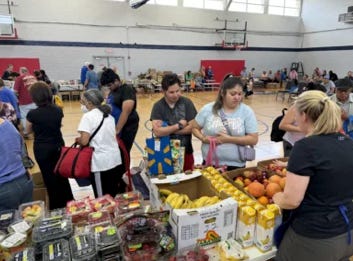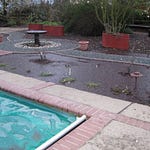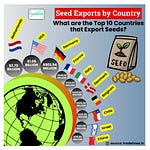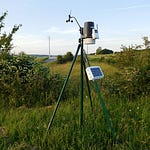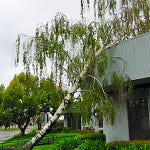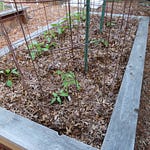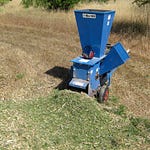One of my frequent bicycling routes takes me by a local food bank. Over the years as I pedal by in the morning, I’ve seen the line of cars increase while waiting for the 10 am food bank opening. Lines of a half block or more were common during the age of Covid (2021-2022).
Lately, the line of cars has not only increased in length, it’s now 2 lanes of traffic stretching down the road waiting for a bag or two of food. Fortunately, the road widens out as it approaches the food bank, and the employees there have adopted the Dutch Brothers Coffee / In-and-Out Hamburger traffic facilitating tactic of walking the lines of cars, and getting the information they need (I’m still trying to figure out what Dutch Brothers is putting in their $6+ coffee drinks that brings in such a large crowd. Is it the sugar?).
The number of households living paycheck to paycheck has risen dramatically - up to two-thirds of all households in the U.S. living on the edge - according to one report. There’s more hurt on the way because of recent job losses due to AI, governmental shutdown of services, increased food costs due to tariffs, housing costs, and all the other reasons that you don’t want to be reading about in a gardening column.
GARDENERS CAN HELP
Still, gardeners can help out their neighbors by donating their excess backyard produce - vegetables and fruit - to a nearby food bank or food pantry. For example, right now in late October, here in USDA Zone 9 (and I know I am not alone in this bounty), there’s a lot of sweet peppers waiting to be harvested - definitely more than we can eat or process into relish. And what are those bright orange orbs staring at me from that tree outside my window? Oh yeah, Fuyu persimmons, also more than we can eat or dehydrate, that will be ready to harvest in a week or two. Definitely, these are the prime mid-Autumn candidates for transporting to the local food bank. Coming up in winter, it will be the cornucopia of citrus - oranges, mandarins, lemons - that will be heading to the food bank, along with fresh greens.
Don’t know where you’re nearest food bank is located? Go to AmpleHarvest.org, and find the food banks in your area. It’s quick, easy, and as far as I can tell in my own area, accurate. Your local food bank would probably welcome your donation of healthy, homegrown food (always check first).
In this week’s newsletter podcast (above), Gary Oppenheimer, the founder of AmpleHarvest.org, talks about the need for more, fresh, wholesome foods getting into the hands (and mouths) of those who can’t afford to eat healthy, but want to. Give it a listen, or read the transcript, below. Thanks.
TRANSCRIPT Interview with Gary Oppenheimer of AmpleHarvest.org
(recorded in 2020)
Farmer Fred:
[0:00] Every day in every corner of the United States, children and adults are worrying about finding enough food to put on the dinner table while thousands of pounds of food are being thrown away from backyard gardens, from small farms. Millions of Americans are unable to get enough fresh food to maintain proper health. The United States has a malnourished population that needs more than processed foods in order to thrive. So many incredible food banks, pantries, and other hunger organizations are working tirelessly to alleviate hunger in our communities, but they consistently lack in donations of fresh produce. Luckily, you can help. By making regular donations of unused fresh produce to your local food pantry, you can be a part of the solution to increase the health of people in your neighborhood. And you can donate food that you grow or food that you buy. It’s easy.
Farmer Fred:
[0:55] The trick is finding the food pantry nearest you, and you can do that through an incredible site called AmpleHarvest.org. We’re talking with Gary Oppenheimer. He’s with AmpleHarvest.org. He’s the founder. It’s a unique nationwide resource that is eliminating the waste of food, the outcome being a reduction in hunger and malnutrition, along with an improved environment. There’s something like 42 million Americans who grow food in home gardens, community gardens, and their small farmers as well, who could easily donate their excess harvest to one of over 8,600 registered local food pantries spread across all 50 states. And Gary, I want to tell you, first of all, about my experience with your website, ampleharvest.org. There is a page there where you can go and find the food pantry nearest you. And I set a search of 15-mile radius around my house. And up popped, I’m counting, 14 food pantries I never knew existed, including one that is within walking distance. And it’s amazing how easy it could be for people who have an excess of tomatoes or squash or peppers or melons or fruit, where to take it to and how convenient that is. What was your inspiration, Gary, for starting ampleharvest.org?
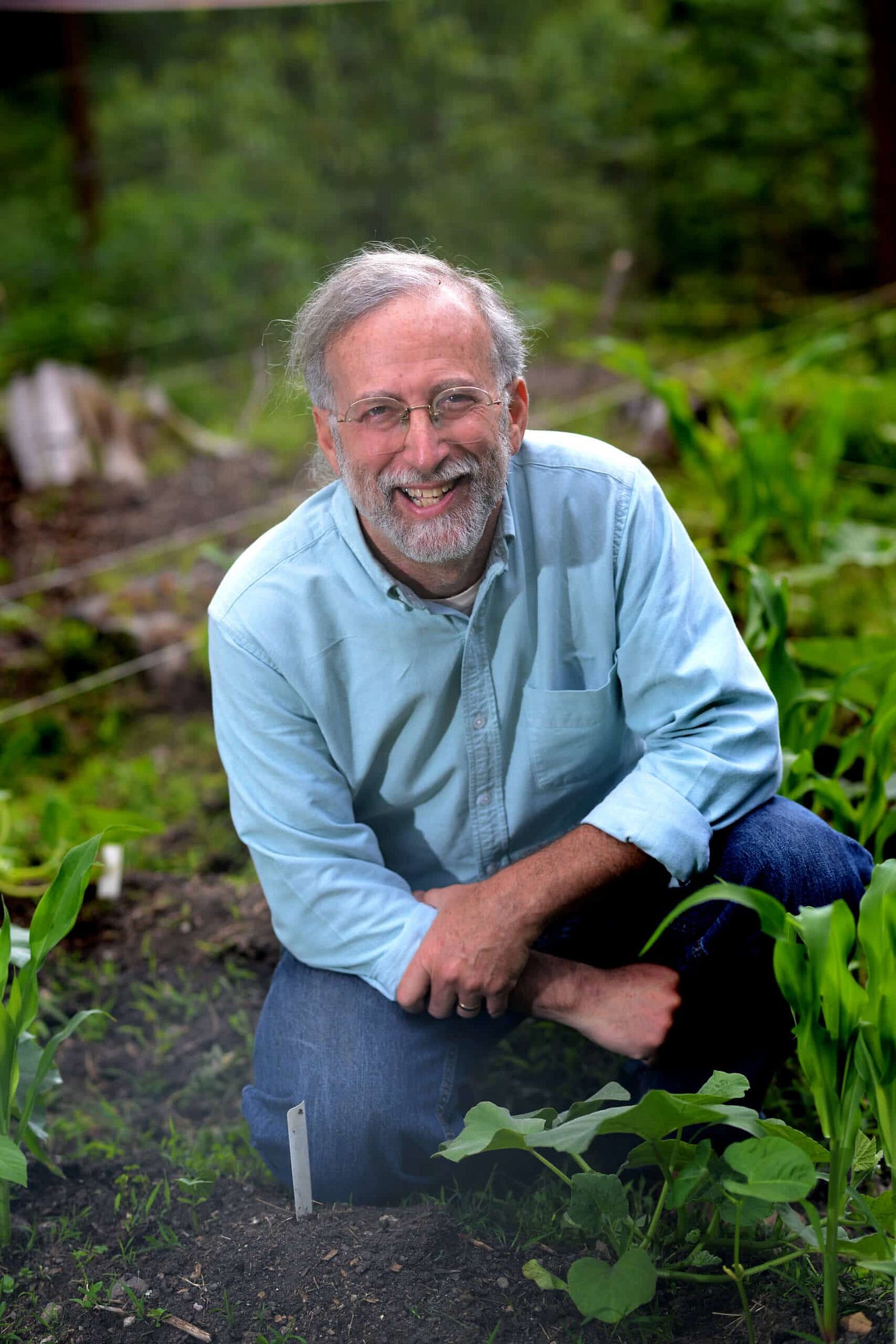
Gary Oppenheimer:
[2:17] That’s a great question, actually. There are two things, two pieces of inspiration. One was I grew up hearing, “don’t waste food”. My grandparents always told me, you know, finish what’s on your plate. Kids are starving in Europe. So not wasting food was always inculcated into me. But as an adult and a master gardener, I was growing more food than I can use, and I couldn’t, I didn’t want to go to waste. My wife said, you can’t forget any more of this stuff in the house.
Gary Oppenheimer:
[2:42] And I struggled to find a place to donate the food to. It turns out I found a battered woman shelter in my town. I’m in Northern New Jersey. But when I had gone on Google to find out where their food pantries, Google said the nearest one was 25 miles away in another city. And I had an epiphany in March of 09. And I realized, wait a minute, this is an information problem. This is not a food problem. People aren’t hungry because America doesn’t have enough food. We actually throw away half the produce, never gets consumed. The problem gardeners across America have always had was miss and missing information. The misinformation was what we were all told at food drives, that you can only donate jars or cans or boxes, but no fresh food. We gardeners took away from that. You can’t donate the extra tomatoes. The missing information was where is a food pantry and what’s a good day of the week and time of day to donate it. When I realized that this was the information problem, I realized the solution was a web-based, an internet-based program that would both educate gardeners about their capacity, that they can indeed donate food.
Gary Oppenheimer:
[3:50] And to where to donate it near them, and the optimum day of the week and time of day. And that timing is super important because if a food pantry, for argument’s sake, was distributing food to hungry families on Sunday afternoons, the ideal time for you to bring it in is Sunday morning, which means the ideal time for you to harvest is either Sunday morning or Saturday night. So the food would go from your garden to the food pantry to a hungry family in hours, Number one, the food pantry didn’t have to buy refrigeration. And number two, the hungry family was getting food fresher than you and I can buy in a supermarket. It’s truly garden fresh food. And the whole thing came together for me in a one four-hour session on my computer. And seven weeks later, with the help of two volunteers, May 18, 2009, Ample Harvest Road rolled out. And it’s been growing in reach and impact ever since.
Farmer Fred:
[4:46] We’re going to be using a couple of terms here that people may get confused. I find it confusing as well. Maybe you can explain it. We will be talking about food banks and food pantries. What is the difference?
Gary Oppenheimer:
[4:57] Well, this is a fun question. All right. For most of America, for all of America, a food bank is a large industrial warehouse type operation, around 200 of them in America. They’re part of the Feeding America Network. These are large warehouses where large amounts of food come in and large amounts of food are then redistributed out to the local programs where hungry families go. So those local programs where hungry families go, there are around 33,500 across America, are usually called a food pantry and in some states a food cupboard or food shelf or food closet. The exception, as far as I know, was Oregon and Washington where those local programs are also called food banks. And you said a little bit ago that I think in Sacramento, they’re also sometimes called food banks. So in the vernacular, in the common language of food banks where a hungry family gets food, but in the real system, there’s a distinction. And the reason I had to create ampleharvest.org was because when the food went from a food drive to a food bank or a food pantry, it took too long. But when it went from a food drive or my garden, for that matter, to a food pantry, it could happen in 15 minutes. So this was an architectural discussion. This is great for a linguistic nerd, but it’s... If people want to use the word food bank, that’s perfectly fine. But I’ll use the word food pantry just to be more correct.
Farmer Fred:
[6:25] Ampleharvest.org is geared to a wide range of gardeners. You’ve got home gardeners, new gardeners, farmers and food producers, Master Gardeners, and school gardens. And boy, I’m thinking about food waste and all of a sudden, wow, school gardens. I wonder what they’re doing with all that excess food that they’re growing in their little school, especially when it may be happening in the summertime and there isn’t anybody there to harvest it?
Gary Oppenheimer:
[6:51] School gardens, you’re absolutely right. It’s also camp gardens, by the way. But a school garden, you’ve planted the stuff and then the kids are gone for the summer and who’s harvesting? Or the camp. The camp had a garden and come the end of August or September when kids go back to school, who’s harvesting? So they have the opportunity to also donate the food, by the way, as do other places that don’t think of themselves as gardens. You might have a golf course that has citrus fruits raining down. You might have a public park, for example.
Gary Oppenheimer:
[7:22] So there’s lots and lots of opportunity for food to be donated from different places. The work we’re doing is to enable as much wholesome, healthy, fresh, locally grown food to get to food pantries as possible, because that not only reduces hunger across America, but it also improves the nation’s health and well-being. The healthier your diet, obviously, the healthier you are. I’ll just give you one number which blew me away when I learned about it. Cisco Systems, the internet company, did an analysis of ampleharvest.org years ago. And it’s online at ampleharvest.org slash study if you want to see it. And their analysis was, if every gardener in America knew that he or she could donate food, surplus food. And if every food pantry in America was on Ample Harvest that were able to receive the food, the nation’s health care costs would drop $58 billion a year.
Farmer Fred:
[8:20] I always believe that the word pharmacy should be spelled F-A-R-M-A-C-Y because healthy, homegrown, fresh farm food is one of the best ways to get your health back.
Gary Oppenheimer:
[8:33] Absolutely. And when you think about two of the leading causes of ill health in America are obesity and diabetes, which are both costly in terms of your own well-being and costly in terms of just the medical care involved, those are both diet-impacted diseases. You improve the diet, you reduce those diseases, you have a healthier and, frankly, by extension, a wealthier nation.
Farmer Fred:
[8:59] One of the categories you have that you’re appealing to is called new gardeners, but there’s a subset of that that we were talking about before the interview called the accidental gardener, and they can also participate with ampleharvest.org.
Gary Oppenheimer:
[9:13] Yeah, I wrote a blog article about that, the accidental gardener, and people ask, well, what’s an accidental gardener? Either you’re a gardener or you’re not. And I had realized that if you buy a house...
Gary Oppenheimer:
[9:25] And the house came with a fruit tree that somebody previously planted, apples, oranges, what have you. You may not think of yourself as a gardener if you don’t get your fingers dirty and garden. But the reality is that every year, the tree is raining down on you, all this wonderful food, the apples and the oranges or what have you. And so I describe that person as the accidental gardener. That person, too, has the opportunity to donate the food.
Gary Oppenheimer:
[9:57] I was named CNN Hero in April 2010. The day I was named CNN Hero, I received an email from somebody in the Southwest who said that the prior year before he’d heard of AmpleHarvest.org, he had thrown away eight 55-gallon drums of citrus fruit because he didn’t know he could donate it. This is a huge opportunity for the country. And the reality is, we haven’t even started tackling that yet. So the $58 billion number was based on the gardeners who know they garden, not the accidental gardeners. So these numbers are going to be subject to change. And I also want to give you one other number subject to change. You started this with saying there are 42 million gardeners in America. That’s pre-COVID. The data we’re now seeing from partners in the industry speaks to 58 million
people, and it may well be growing higher as millions more people start their own gardens. And I strongly believe that most of the people who started gardening are going to continue to garden. That means more people gardening and more healthy, fresh food for hungry families on a permanent basis. Look, one thing’s really important. When you grow a garden and have your own garden, you’re growing it for your own enjoyment.
Gary Oppenheimer:
[11:06] And for your own family. You should be enjoying that food first. The food, however, that you grow that’s in excess of what you can use or preserve or share with friends should never be going to waste. That’s the food that should be donated to a local food pantry. And that’s whether you’re a backyard gardener or maybe you got herbs growing in a kitchen window or in a community garden, it doesn’t really make any difference. And by the way, also the amount of surplus is not terribly important either. Don’t feel bad. I only got five tomatoes to donate. Donate your five tomatoes. It’ll be commingled with all the other people with five tomatoes and 500 pounds of tomatoes at the table. The important thing is that the food is eaten by somebody and nourishes somebody in the community. It’s good for the community.
Gary Oppenheimer:
[11:50] Frankly, it’s good for the planet because food waste is a contributing factor to climate change. And it’s a wonderful way of people helping their neighbors in need by reaching into their backyards when they can’t afford to reach into their back pocket. Today, we are at work, as you had said, in 50 states, in about 4,200 communities. And today, we’re approaching 9,000 food pantries, which is about a quarter of America’s food pantries, which is great. That means we have three quarters of America’s food pantries yet re-engage and work with and work with those surrounding gardeners. So, we have a lot of work ahead of us and your dollars certainly get us a long way towards succeeding on that.
Farmer Fred:
[12:28] If you’ve got excess food, you know where to go. Ampleharvest.org will aim you to the food pantry nearest you. Gary Oppenheimer is the founder of Ampleharvest.org. Gary, thanks for a few minutes of your time.
Gary Oppenheimer:
[12:41] It’s my pleasure. Thank you very, very much.
Fred Hoffman is also a University of California Cooperative Extension Master Gardener in Sacramento County. And he’s loved bicycling for a long, long, time.



